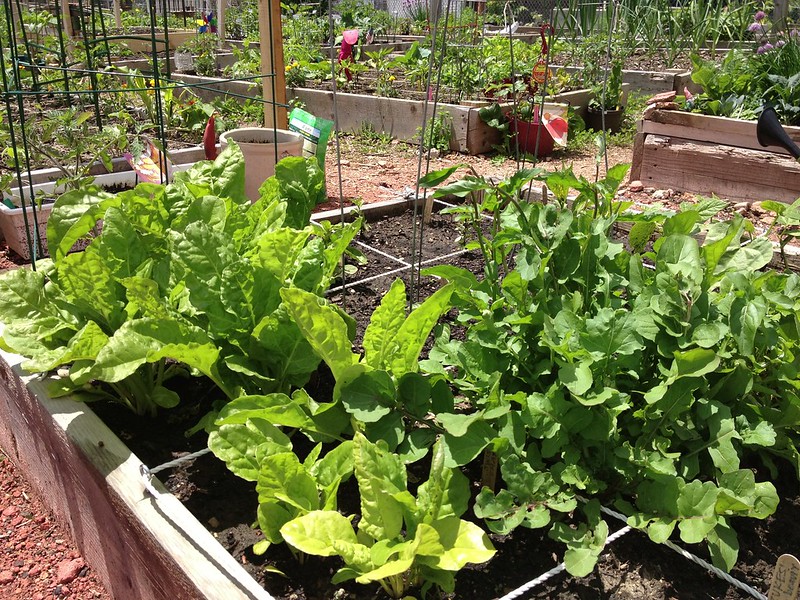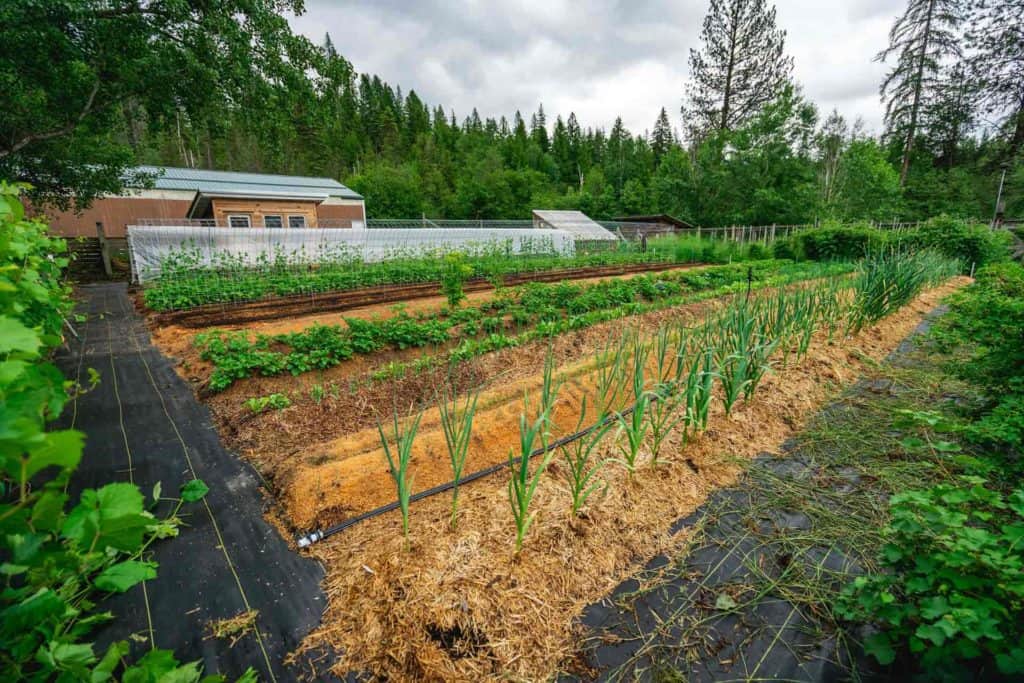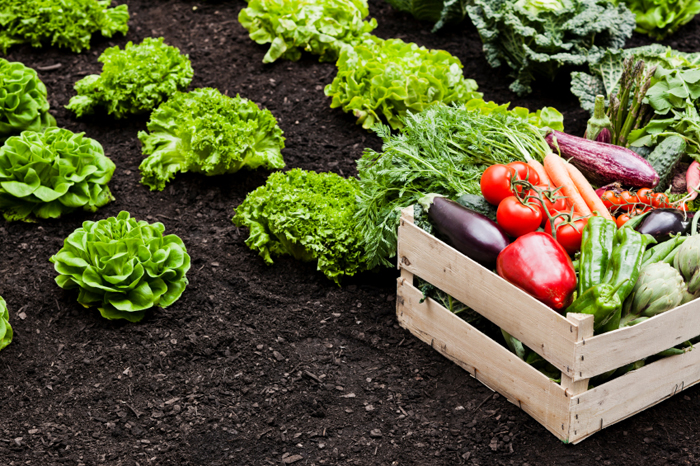Organic and Sustainable Practices for Homestead Gardening
Organic and Sustainable Practices for Homestead Gardening
Blog Article
Discover the Secrets to Producing a Efficient and lovely Gardening Space
Developing a effective and beautiful horticulture room is not just an issue of growing vegetables and flowers; it calls for a critical technique that encompasses numerous essential elements. From selecting the right location based on sunshine and soil type to thoughtfully making your design and choosing appropriate plants, each choice plays a pivotal duty in the success of your garden.
Choosing the Right Location
Picking the excellent location for your garden is essential to its success and overall aesthetic allure. The initial step in this procedure involves analyzing sunshine direct exposure, as a lot of plants require at the very least six hours of straight sunshine daily (Homestead Gardening). A south-facing yard normally gets the most light, while shaded locations can hamper growth and flowering
Additionally, take into consideration soil quality and drainage. Well-draining dirt is vital to protect against water logged roots, which can lead to plant diseases. Carrying out a dirt test can provide beneficial details regarding pH levels and vitamins and mineral web content, allowing you to modify the soil accordingly.
Furthermore, distance to water resources is another element to weigh - Homestead Gardening. Having very easy accessibility to a tube or watering system can simplify the watering procedure and encourage regular plant treatment. Wind security is also essential; placing your yard near frameworks, such as fences or walls, can shield it from severe winds that may harm fragile plants
Finally, think about access for maintenance and harvesting. A well-placed yard permits practical accessibility, making certain that you can conveniently tend to your plants without triggering unnecessary tension or disturbance. Thoughtful area option lays the foundation for a thriving yard.
Choosing Plants Carefully
When selecting plants for your garden, it's vital to think about factors such as environment, dirt conditions, and individual preferences to make certain a harmonious and effective space. A comprehensive understanding of your local environment will assist you in picking plants that thrive in your particular setting. Choosing drought-resistant selections is beneficial in arid areas, while moisture-loving species might be extra ideal for areas with high rains.
Dirt problems are just as vital; carrying out a dirt examination can expose pH degrees and vitamins and mineral web content, allowing you to choose plants that will certainly thrive. Native plants are typically a superb choice, as they are typically well-adapted to regional soil kinds and call for less upkeep.
Reflect on your individual preferences-- picking plants that reverberate with your visual tastes will certainly improve your pleasure and dedication to maintaining your yard. By thoroughly examining these factors, you can produce a successful and diverse plant choice that elevates your horticulture experience.
Designing Your Yard Format
With a thoughtfully picked plant option in hand, the following action is to create a garden format that optimizes both appeal and functionality. Begin by evaluating the readily available area, considering aspects such as sunshine, shade, and wind patterns. A well-planned layout ought to incorporate numerous areas, including areas for planting, pathways, and potentially seating.
Beginning with larger plants or centerpieces, such as trees or tall perennials, placed strategically to produce aesthetic rate of interest. Layer smaller sized plants in front to boost depth and structure. Think about the development practices of your picked plants; taller selections ought to be positioned at the back or center of beds, while shorter ones can line the edges.
Including moved here pathways not just facilitates accessibility for upkeep yet also welcomes exploration. Usage products that complement the yard's total aesthetic, whether rock, gravel, or timber chips.
Furthermore, think of seasonal modifications and exactly how your layout will look throughout the year. Including evergreens alongside seasonal blossoms can make sure year-round beauty. Inevitably, a properly designed garden design balances the natural elegance of plants with practical factors to consider, resulting in an area that is both welcoming and effective.
Enhancing Soil Health And Wellness

To boost dirt health, begin by conducting a soil test to evaluate pH degrees, nutrition web content, and soil structure. This will certainly notify your modifications. Incorporate raw material such as garden compost, well-rotted manure, or leaf mold and mildew to enhance dirt framework, water retention, and microbial task. Furthermore, practicing plant rotation can avoid nutrition deficiency and minimize pest and condition pressures.
Mulching is an additional efficient strategy; it not just saves moisture however also subdues weeds and gradually enriches the dirt as it damages down. Preventing extreme tillage is important, as it can interfere with soil structure and harm valuable organisms. Rather, adopt no-till or minimal tillage practices to preserve soil integrity.

Preserving Your Garden Successfully
A properly maintained garden gives satisfaction and efficiency, needing consistent interest to ensure that plants prosper and the landscape continues to be inviting. Efficient yard maintenance includes several vital methods that enhance the health of your plants and the overall aesthetic of your room.
Regular watering is essential; nevertheless, it is essential to customize your watering schedule based on the particular needs of your plants and regional environment problems. Mulching can help keep wetness, suppress weeds, and regulate dirt temperature. In addition, timely weeding protects against competition for nutrients and resources, making sure that your plants grow.
Trimming is one more necessary job. It urges healthy and balanced growth, eliminates dead or infected branches, Click This Link and forms plants to preserve an blog here attractive framework. In addition, keeping track of for bugs and conditions is crucial; early detection and treatment can save your plants from significant damages.
Fertilization should be performed thoughtfully, making use of organic choices whenever feasible to promote long-lasting soil health. Finally, seasonal tasks such as planting, dividing perennials, and preparing for winter will guarantee your garden stays vibrant year-round. By following these methods vigilantly, you can cultivate a yard that is both productive and stunning.
Final Thought
Finally, the creation of a attractive and productive gardening space requires cautious factor to consider of several crucial elements. Choosing an appropriate area with sufficient sunlight, selecting suitable plants, designing an aesthetically pleasing format, improving dirt health, and making certain normal maintenance are vital components. By incorporating these practices, one can cultivate a prospering yard that not only boosts the landscape yet likewise promotes ecological balance and sustainability. Such a technique ultimately results in a satisfying horticulture experience.
From choosing the right area based on sunshine and soil kind to thoughtfully developing your format and picking appropriate plants, each choice plays a pivotal role in the success of your yard. Well-draining dirt is crucial to avoid water logged origins, which can lead to plant diseases.When picking plants for your yard, it's necessary to think about elements such as climate, dirt problems, and individual choices to ensure a effective and harmonious room. Ultimately, a well-designed garden design integrates the natural beauty of plants with practical considerations, resulting in a space that is both welcoming and productive.

Report this page